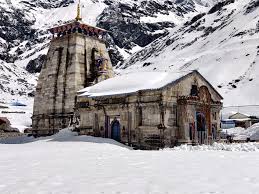The ek dham yatra refers to the pilgrimage to a single sacred shrine in the Himalayan region of Uttarakhand, with Kedarnath being one of the most significant destinations. As part of the larger char dham yatra, Kedarnath holds a special place in the hearts of millions of devotees who seek the blessings of Lord Shiva, making this journey a deeply spiritual and transformative experience.
Significance of Kedarnath
Kedarnath, situated at an altitude of 3,583 meters (11,755 feet), is one of the twelve Jyotirlingas, which are considered to be the most sacred abodes of Lord Shiva. The temple is believed to have been constructed by the Pandavas, the protagonists of the Mahabharata, who sought Lord Shiva’s blessings for forgiveness after the Kurukshetra war. The temple’s serene setting amidst towering peaks adds to its spiritual aura, drawing devotees from across the country.
Getting to Kedarnath
- Base Locations: The journey to Kedarnath typically begins in Haridwar or Rishikesh, both of which are well-connected by road and rail.
- Travel Route:
- Haridwar/Rishikesh to Gaurikund: From Haridwar or Rishikesh, travelers must drive to Gaurikund, the last motorable point before Kedarnath. This journey covers approximately 240 kilometers and takes about 8-10 hours by road.
The Trek to Kedarnath
Once at Gaurikund, the trek to Kedarnath is approximately 16 kilometers and usually takes about 6 to 8 hours. The route is well-defined and offers breathtaking views of the Himalayan landscape.
- Trekking Options:
- On Foot: The traditional method is to trek on foot, allowing pilgrims to immerse themselves in the natural beauty surrounding them.
- Ponies and Palanquins: For those who prefer comfort, ponies and palanquins are available for hire, providing alternative means of transportation.
Kedarnath Temple
- Temple Architecture: The Kedarnath Temple is an architectural marvel made of large stone slabs and adorned with intricate carvings. Its robust structure has withstood the test of time and natural calamities.
- Darshan: The main deity of the temple is a large black stone idol representing Lord Shiva. The temple typically opens for pilgrims in late April and closes in early November, depending on weather conditions.
Best Time to Visit
The best time for the kedarnath dham yatra is between May and June and September to October. During these months, the weather is generally pleasant, making the pilgrimage accessible. The monsoon season (July-August) can bring heavy rainfall, making the trek challenging and sometimes dangerous.
Tips for Pilgrims
- Health Precautions: Since Kedarnath is at a high altitude, be aware of the symptoms of altitude sickness. It’s essential to acclimatize and stay hydrated.
- Physical Fitness: A moderate level of fitness is required for the trek. Regular walking and stamina-building exercises can be beneficial.
- Weather Gear: Carry appropriate clothing, especially warm attire for the nights, and be prepared for sudden weather changes.
- Safety Measures: Trek with a group or a guide, especially if you’re unfamiliar with the terrain, and carry a basic first aid kit.
Cultural Significance
Kedarnath is not just a religious destination; it also represents the cultural heritage of Uttarakhand. The local traditions, music, and festivals add vibrancy to the pilgrimage. During your visit, you may experience local cuisine, participate in rituals, and interact with fellow pilgrims, enhancing the spiritual atmosphere of the journey.
The ek dham yatra to Kedarnath is more than a mere pilgrimage; it is a journey of faith, self-discovery, and connection with the divine. The natural beauty, the spiritual energy of the temple, and the devotion of fellow pilgrims create an atmosphere that is both humbling and inspiring. For many, the Kedarnath Yatra is a life-changing experience, filled with moments of reflection, reverence, and awe at the grandeur of the Himalayas. Embarking on this journey promises not only spiritual fulfillment but also an opportunity to witness the breathtaking landscapes that Uttarakhand has to offer.
